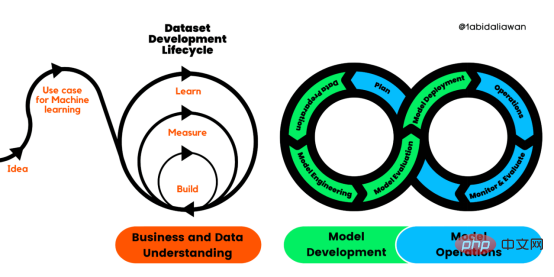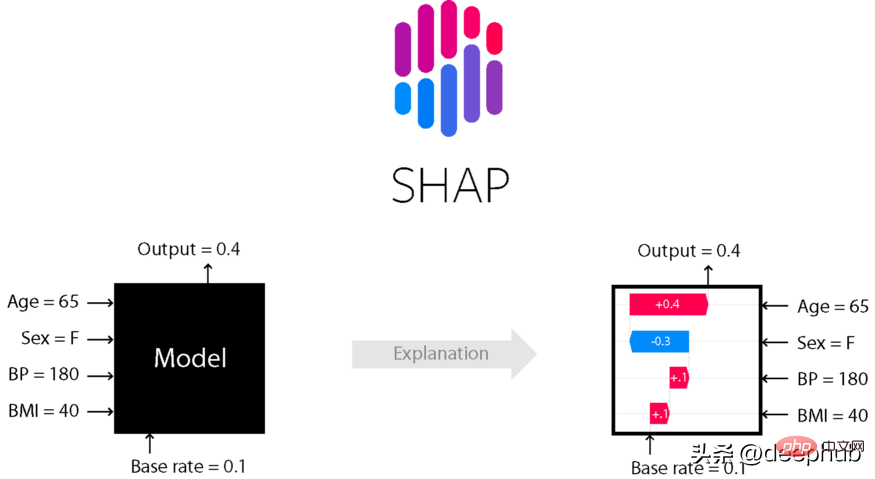 Backend Development
Backend Development PHP Tutorial
PHP Tutorial CI framework source code reading notes 7 Configuration management components Config.php, ciconfig.php_PHP tutorial
CI framework source code reading notes 7 Configuration management components Config.php, ciconfig.php_PHP tutorialCI framework source code reading notes 7 Configuration management components Config.php, ciconfig.php
In a flexible and controllable application, there will inevitably be a large number of controllable parameters (we called configuration), for example, in the main configuration file of CI (here refers to the Application/Config/Config.php file), there are the following multiple configurations:
<span>$config</span>['base_url'] = 'http://test.xq.com'<span>; </span><span>$config</span>['index_page'] = ''<span>; </span><span>$config</span>['uri_protocol'] = 'AUTO'<span>; </span><span>$config</span>['url_suffix'] = '.html'<span>; </span><span>$config</span>['language'] = 'english'<span>; </span><span>$config</span>['charset'] = 'UTF-8'<span>; </span><span>$config</span>['enable_hooks'] = <span>FALSE</span><span>; …………………………</span>
Not only that, CI also allows you to put configuration parameters outside the main configuration file. For example, you can define your own configuration file as Config_app.php, and then load your configuration file in your application controller like this:
<span>$this</span>->config->load('config_app');
How does CI manage such a variety of configuration items and configuration files? This is what we are going to track today: CI’s configuration management component-Config.php.
Look at the class diagram of this component first:

Among them:
_config_paths: The path of the configuration file to be searched. This refers to the APPPATH directory. Your configuration file should also be located under APPPATH.
Config: This array is used to store all configuration items item
Is_loaded: Stores a list of all loaded configuration files.
_construct: The constructor of the component, mainly configuring base_url
_assign_to_config: Allow configuration items in index.php to override settings in the main configuration file
_uri_string, site_url, base_url, system_url: URI, project path and other related processing.
load: Load the configuration file.
item: Get configuration item
slash_item: Same as item, except that "" separator is added at the end. Generally, only site_url, base_url, etc. will require slash_item
Let’s analyze the specific implementation of each method:
1. Component initialization _construct
We mentioned before when analyzing the Common.php global function that before the Config component is instantiated, all group configuration files are obtained through the get_config() function. When the Config component is instantiated, all configurations must be stored in its own private variable $config to facilitate subsequent access and processing:
$this->config =& get_config();
Because our application often needs to obtain the value of base_url, and this value is not required (base_url in config can be set to empty), but we do not want the value of base_url to be empty. Therefore, CI performs certain processing on base_url when initializing the Config component. This mainly occurs when base_url is set to empty in Config.php:
(1). If $_SERVER['HTTP_HOST'] is set, base_url is set to the form of Protocol (http or https) + $_SERVER['HTTP_HOST'] + SCIRPT_PATH:
$base_url = isset($_SERVER['HTTPS']) && strtolower($_SERVER['HTTPS']) !== 'off' ? 'https' : 'http'; $base_url .= '://'. $_SERVER['HTTP_HOST']; $base_url .= str_replace(basename($_SERVER['SCRIPT_NAME']), '', $_SERVER['SCRIPT_NAME']);
(2). Otherwise, it will be set directly to http://localhost/:
$base_url = 'http://localhost/';
(3). At the same time, map the base_url configuration item to the configuration array to facilitate subsequent access (we will use the set_item method later, you just need to know here that it is added to the configuration item and will overwrite the old value):
$this->set_item('base_url', $base_url);
We will see later that the base_url configuration item is necessary for many components. Therefore, it is understandable that CI spends a certain amount of energy to ensure the correctness of base_url.
2. Load configuration file load
This is one of the core methods in the Config component. The signature of this function:
<span>function</span> load(<span>$file</span> = '', <span>$use_sections</span> = <span>FALSE</span>, <span>$fail_gracefully</span> = <span>FALSE</span>)
All parameters are optional parameters.
Here we briefly explain the meaning of each formal parameter:
$file The configuration file that needs to be loaded may or may not contain the suffix name. If this parameter is not specified, the Config.php file will be loaded by default
$user_sections: Whether to use a separate section for the loaded configuration file, you may still not understand. Just imagine if you define your own configuration file, and the configuration items in your configuration file It may conflict with the configuration items in the Config.php file. You can prevent the configuration items from being overridden by specifying $section as true.
$fail_gracefully: Processing when the configuration file to be loaded does not exist. Gracefully means graceful. If this parameter is set to true, it will only return false without displaying an error when the file does not exist.
Look at the specific implementation of this method:
(1). Configuration file name preprocessing:
<span>$file</span> = (<span>$file</span> == '') ? 'config' : <span>str_replace</span>('.php', '', <span>$file</span>);
This $file finally contains only the file name, not the extension. If this parameter is empty, the Config.php configuration file is loaded by default. This also shows that when we load our own configuration file:
$this->config->load(""); and
$this->config->load("config")The effect is the same, but:
$this->config->load("config_app") and
$this->config->load("config_app.php") has the same effect.
If $use_sections is enabled, this $file will be used as the primary key of config.
(2). Find and load configuration files.
Before tracking the implementation, let’s first explain several important parameters in the search and loading process:
(3).具体的查找过程是一个双重的foreach循环:
/* 对于config_paths中的路径循环查找 */
foreach ($this->_config_paths as $path)
{
/* 对每个location查找,也就是分别对ENVIRONMENT/config/ 和 config/ 目录查找 */
foreach ($check_locations as $location)
{
/* 实际的配置文件名 */
$file_path = $path.'config/'.$location.'.php';
<br /> /* 如果已经加载,则跳至最外层循环,事实上,由于_config_paths的设定,会跳出整个循环 */
if (in_array($file_path, $this->is_loaded, TRUE))
{
$loaded = TRUE;
continue 2;
}
/* 若文件存在,跳出当前循环 */
if (file_exists($file_path))
{
$found = TRUE;
break;
}
}
/* 如果没有找到配置文件,继续下一次循环。同样,由于_config_path的设定,会跳出整个循环 */
if ($found === FALSE)
{
continue;
}
}
(4).引入配置文件
到这里,如果配置文件不存在,则$found和$loaded都为false,CI会根据fail_gracefully参数决定文件不存在的处理方式;如果文件存在,则需要对配置文件的格式检查:
/* 引入配置文件 */
include($file_path);
/* 配置文件的格式检查,这同时也说明,配置文件中最起码应该包含$config数组 */
if ( ! isset($config) OR ! is_array($config))
{
if ($fail_gracefully === TRUE)
{
return FALSE;
}
show_error('Your '.$file_path.' file does not appear to contain a valid configuration array.');
}
(5).对use_sections参数的处理
前面说过,use_secitons参数如果为true,则CI_Config会对该配置文件启用独立的key存储。例如,我们在controller中这样加载配置文件:
<span>$this</span>->config->load("config_app",<span>true</span>);
则config数组是这样的格式:
[config] => <span>Array</span><span>
(
[base_url] </span>=> http:<span>//</span><span>test.xq.com</span>
[index_page] =><span>
[uri_protocol] </span>=><span> AUTO
[url_suffix] </span>=> .<span>html
[proxy_ips] </span>=><span>
[web_akey] </span>=><span> yyyyyyyyyyyy
[config_app] </span>=> <span>Array</span><span>
(
[web_akey] </span>=><span> xxxxxxx
[web_skey] </span>=><span> xxxxxxxxxxxxxxxxxxx
[web_callback_url] </span>=> http:<span>//</span><span>test.xq.com/</span>
[sess_pre] =><span> WEB_APP
[cart_min] </span>=> 1<span>
[cart_max] </span>=> 999<span>
)
)</span>
相反,如果我们不指定use_sections,则数组是这样存储的:
[config] => <span>Array</span><span>
(
[base_url] </span>=> http:<span>//</span><span>test.xq.com</span>
[index_page] =><span>
[uri_protocol] </span>=><span> AUTO
[url_suffix] </span>=> .<span>html
[web_akey] </span>=><span> xxxxxxx
[web_skey] </span>=><span> xxxxxxxxxxxxxxxxxxx
[web_callback_url] </span>=> http:<span>//</span><span>test.xq.com/</span>
[sess_pre] =><span> WEB_APP
[cart_min] </span>=> 1<span>
[cart_max] </span>=> 999<span>
)</span>
这也意味着,在不启用user_secitons的情况下,如果你的配置文件中有与主配置文件Config.php相同的键,则会覆盖主配置文件中的项:
/* 启用单独的key存放加载的config */
if ($use_sections === TRUE)
{
if (isset($this->config[$file]))
{
$this->config[$file] = array_merge($this->config[$file], $config);
}
else
{
$this->config[$file] = $config;
}
}
else
{
/* 执行merge,更改CI_Config::config */
$this->config = array_merge($this->config, $config);
}
(6).错误处理
双层循环完成后,如果loaded为false,也就是未成功加载任何配置,则根据fail_gracefully做相应的错误处理:
/* 未成功加载任何配置 */
if ($loaded === FALSE)
{
if ($fail_gracefully === TRUE)
{
return FALSE;
}
show_error('The configuration file '.$file.'.php does not exist.');
}
3. 获取配置项item,slash_item
item方法用于在配置中获取特定的配置项,改方法的签名:
<span>function</span> item(<span>$item</span>, <span>$index</span> = '')
注意,如果你在load配置文件的时候启用了use-sections,则在使用item()获取配置项的时候需要指定第二个参数,也就是加载的配置文件的文件名(不包含后缀)。为了更清楚这一点,我们假设现在Config/目录下有配个配置文件:config.php和config_app.php,这两个配置文件中含有一个相同的键web_akey, 在config.php中,该配置为:
<span>$config</span>['web_akey'] = 'yyyyyyyyyyyy';
而config_app.php中,该配置为:
<span>$config</span>['web_akey'] = 'xxxxxxx';
现在,通过use-sections的方法加载config_app配置文件(config.php会在Config组件初始化的时候被加载):
$this->config->load("config_app",true);
然后在控制器中获取web_akey配置项:
echo "config_app:web_akey => ",$this->config->item("web_akey","config_app"),"<br/>";
echo "config :web_akey => ",$this->config->item("web_akey");
实际的获取结果:
config_app:web_akey =><span> xxxxxxx config </span>:web_akey => yyyyyyyyyyyy
了解原理之后,该方法的实现就比较简单了:
function item($item, $index = '')
{
/* 没有设置use_sections的情况,直接在config中寻找配置项 */
if ($index == '')
{
if ( ! isset($this->config[$item]))
{
return FALSE;
}
$pref = $this->config[$item];
}
else
{
if ( ! isset($this->config[$index]))
{
return FALSE;
}
if ( ! isset($this->config[$index][$item]))
{
return FALSE;
}
$pref = $this->config[$index][$item];
}
/* 统一的return出口 */
return $pref;
}
slash_item实际上与item()方法类似,但他不会去用户的配置中寻找,并且,他返回的是主配置文件中的配置项,并在配置项最后添加反斜杠.这个方法,通常用于base_url和index_page这两个配置项的处理:

该方法的实现源码:
function slash_item($item)
{
/* 不存在配置项 */
if ( ! isset($this->config[$item]))
{
return FALSE;
}
/* 配置项为空 */
if( trim($this->config[$item]) == '')
{
return '';
}
/* 去除最后的多余的"/",并在结尾添加一个"/" */
return rtrim($this->config[$item], '/').'/';
}
4. 获取站点site_url, base_url,system_url
这里先澄清这几个含义的区别:
echo "site_url : ",$this->config->site_url("index/rain"),"</br>";
echo "base_url : ",$this->config->base_url("index/rain"),"<br/>";
echo "system_url: ",$this->config->system_url();
的结果分别是:
<span>site_url : http://test.xq.com/index/rain.html base_url : http://test.xq.com/index/rain system_url: http://test.xq.com/system/</span>
可以看出,site_url是添加了suffix(在Config/config.php中配置)后的url地址(呵呵,如果你的uri中有query string,则Ci总是在最后添加suffix:http://test.xq.com/index/rain?w=ss.html 是不是很奇怪.)
base_url则是没有添加suffix的url地址。
而system_url这个东西很奇怪,是获取系统的url路径。但实际上,由于system路径并没有直接执行的脚本,所以这个方法的实际用途是什么,暂时不知。有知道的童鞋麻烦告知。
具体的方法实现,这里不赘述了。直接贴出源码:
function site_url($uri = '')
{
/* 没有设置uri,使用base_url + index_page */
if ($uri == '')
{
return $this->slash_item('base_url').$this->item('index_page');
}
/* enable_query_strings未启用,可以添加suffix后缀 */
if ($this->item('enable_query_strings') == FALSE)
{
$suffix = ($this->item('url_suffix') == FALSE) ? '' : $this->item('url_suffix');
return $this->slash_item('base_url').$this->slash_item('index_page').$this->_uri_string($uri).$suffix;
}
/* 否者不添加suffix后缀 */
else
{
return $this->slash_item('base_url').$this->item('index_page').'?'.$this->_uri_string($uri);
}
}
/* 获取base_url,注意与site_url的区别 */
function base_url($uri = '')
{
return $this->slash_item('base_url').ltrim($this->_uri_string($uri), '/');
}
/* 获取system url */
function system_url()
{
/* 获取系统目录. BASEPATH:/search/xx/phpCode/CI/system/ */
$x = explode("/", preg_replace("|/*(.+?)/*$|", "\\1", BASEPATH));
return $this->slash_item('base_url').end($x).'/';
}
5. 获取URI String: _uri_string
site_url和base_url都调用了_uri_string。这个函数是做什么用的呢?
按理来说, _uri_string的功能应该由URI组件来完成,这里却放在了Config组件中,似乎有些不妥(实际上,_uri_string是为base_url和site_url专属服务的)。
对于这样的uri:
<span>array(
'p1' </span>=> 'param1',<span>
'p2' </span>=<span>> 'param2'
)</span>
如果enable_query_string为false,则_uri_string处理过后是这样的形式:
param1/param2
而enable_query_string为true,则处理后的形式是这样的:
p1=param1&p2=param2
这是我们常见(虽然很难看且SEO不好)的形式。改方法的实现源码:
protected function _uri_string($uri)
{
/* enable_query_strings 为false,直接implode */
if ($this->item('enable_query_strings') == FALSE)
{
if (is_array($uri))
{
$uri = implode('/', $uri);
}
$uri = trim($uri, '/');
}
/* 否者,拼接成类似param1=param1¶m2=param2的形式 */
else
{
if (is_array($uri))
{
$i = 0;
$str = '';
foreach ($uri as $key => $val)
{
/* 第一个参数前面不需要加& */
$prefix = ($i == 0) ? '' : '&';
$str .= $prefix.$key.'='.$val;
$i++;
}
$uri = $str;
}
}
return $uri;
}
6. 设置配置项 set_item _assign_to_config
与item()相反,set_item用于设置配置项。如果配置项已经存在,则会被覆盖:
$this->config[$item] = $value;
_assign_to_config同set_item,该方法提供了数组的设置方式(调用set_item。我们之前在解释CodeIgniter.php文件的时候提到过:改方法允许在index.php中设置独立的配置项,且index.php中的配置具有更高的优先权(会覆盖主配置文件中的配置):
function _assign_to_config($items = array())
{
if (is_array($items))
{
foreach ($items as $key => $val)
{
$this->set_item($key, $val);
}
}
}
到这里,Config组件的基本解析就算是完成了,我们再次回顾下该组件的基本功能:
最后感慨一下,一个好的Config组件,会省不少事啊。
 解读CRISP-ML(Q):机器学习生命周期流程Apr 08, 2023 pm 01:21 PM
解读CRISP-ML(Q):机器学习生命周期流程Apr 08, 2023 pm 01:21 PM译者 | 布加迪审校 | 孙淑娟目前,没有用于构建和管理机器学习(ML)应用程序的标准实践。机器学习项目组织得不好,缺乏可重复性,而且从长远来看容易彻底失败。因此,我们需要一套流程来帮助自己在整个机器学习生命周期中保持质量、可持续性、稳健性和成本管理。图1. 机器学习开发生命周期流程使用质量保证方法开发机器学习应用程序的跨行业标准流程(CRISP-ML(Q))是CRISP-DM的升级版,以确保机器学习产品的质量。CRISP-ML(Q)有六个单独的阶段:1. 业务和数据理解2. 数据准备3. 模型
 thinkphp是不是国产框架Sep 26, 2022 pm 05:11 PM
thinkphp是不是国产框架Sep 26, 2022 pm 05:11 PMthinkphp是国产框架。ThinkPHP是一个快速、兼容而且简单的轻量级国产PHP开发框架,是为了简化企业级应用开发和敏捷WEB应用开发而诞生的。ThinkPHP从诞生以来一直秉承简洁实用的设计原则,在保持出色的性能和至简的代码的同时,也注重易用性。
 Python 强大的任务调度框架 Celery!Apr 12, 2023 pm 09:55 PM
Python 强大的任务调度框架 Celery!Apr 12, 2023 pm 09:55 PM什么是 celery这次我们来介绍一下 Python 的一个第三方模块 celery,那么 celery 是什么呢? celery 是一个灵活且可靠的,处理大量消息的分布式系统,可以在多个节点之间处理某个任务; celery 是一个专注于实时处理的任务队列,支持任务调度; celery 是开源的,有很多的使用者; celery 完全基于 Python 语言编写;所以 celery 本质上就是一个任务调度框架,类似于 Apache 的 airflow,当然 airflow 也是基于 Python
 6个推荐的Python框架,用于构建可解释的人工智能系统(XAI)Apr 26, 2023 am 10:49 AM
6个推荐的Python框架,用于构建可解释的人工智能系统(XAI)Apr 26, 2023 am 10:49 AMAI就像一个黑匣子,能自己做出决定,但是人们并不清楚其中缘由。建立一个AI模型,输入数据,然后再输出结果,但有一个问题就是我们不能解释AI为何会得出这样的结论。需要了解AI如何得出某个结论背后的原因,而不是仅仅接受一个在没有上下文或解释的情况下输出的结果。可解释性旨在帮助人们理解:如何学习的?学到了什么?针对一个特定输入为什么会做出如此决策?决策是否可靠?在本文中,我将介绍6个用于可解释性的Python框架。SHAPSHapleyAdditiveexplanation(SHapleyAdditi
 如何在PHP中使用AOP框架May 19, 2023 pm 01:21 PM
如何在PHP中使用AOP框架May 19, 2023 pm 01:21 PMAOP(面向切面编程)是一种编程思想,用于解耦业务逻辑和横切关注点(如日志、权限等)。在PHP中,使用AOP框架可以简化编码,提高代码可维护性和可扩展性。本文将介绍在PHP中使用AOP框架的基本原理和实现方法。一、AOP的概念和原理面向切面编程,指的是将程序的业务逻辑和横切关注点分离开来,通过AOP框架来实现统一管理。横切关注点指的是在程序中需要重复出现并且
 Microsoft .NET Framework 4.5.2、4.6 和 4.6.1 将于 2022 年 4 月终止支持Apr 17, 2023 pm 02:25 PM
Microsoft .NET Framework 4.5.2、4.6 和 4.6.1 将于 2022 年 4 月终止支持Apr 17, 2023 pm 02:25 PM已安装Microsoft.NET版本4.5.2、4.6或4.6.1的MicrosoftWindows用户如果希望Microsoft将来通过产品更新支持该框架,则必须安装较新版本的Microsoft框架。据微软称,这三个框架都将在2022年4月26日停止支持。支持日期结束后,产品将不会收到“安全修复或技术支持”。大多数家庭设备通过Windows更新保持最新。这些设备已经安装了较新版本的框架,例如.NETFramework4.8。未自动更新的设备可能
 KB5013943 2022 年 5 月更新使 Windows 11 上的应用程序崩溃Apr 16, 2023 pm 10:52 PM
KB5013943 2022 年 5 月更新使 Windows 11 上的应用程序崩溃Apr 16, 2023 pm 10:52 PM如果你在Windows11上安装了2022年5月累积更新,你可能已经注意到你一直使用的许多应用程序都不像以前那样工作了。强制性安全更新KB5013943正在使某些使用.NET框架的应用程序崩溃。在某些情况下,用户会收到错误代码:0xc0000135。可选更新中报告了类似的问题,但并不普遍。随着2022年5月的更新,该错误似乎已进入生产渠道,这次有更多用户受到影响。崩溃在使用.NETFramework的应用程序中很常见,Discord或MicrosoftTeams等
 朱军团队在清华开源了首个基于Transformer的多模态扩散大型模型,经过文本和图像改写全部完成。May 08, 2023 pm 08:34 PM
朱军团队在清华开源了首个基于Transformer的多模态扩散大型模型,经过文本和图像改写全部完成。May 08, 2023 pm 08:34 PM据悉GPT-4将于本周发布,多模态将成为其一大亮点。当前的大语言模型正在成为理解各种模态的通用接口,能够根据不同模态信息来给出回复文本,但大语言模型生成的内容也仅仅局限于文本。另一方面,当前的扩散模型DALL・E2、Imagen、StableDiffusion等在视觉创作上掀起一场革命,但这些模型仅仅支持文到图的单一跨模态功能,离通用式生成模型还有一定距离。而多模态大模型将能够打通各种模态能力,实现任意模态之间转化,被认为是通用式生成模型的未来发展方向。清华大学计算机系朱军教授带领的TSAI


Hot AI Tools

Undresser.AI Undress
AI-powered app for creating realistic nude photos

AI Clothes Remover
Online AI tool for removing clothes from photos.

Undress AI Tool
Undress images for free

Clothoff.io
AI clothes remover

AI Hentai Generator
Generate AI Hentai for free.

Hot Article

Hot Tools

PhpStorm Mac version
The latest (2018.2.1) professional PHP integrated development tool

VSCode Windows 64-bit Download
A free and powerful IDE editor launched by Microsoft

WebStorm Mac version
Useful JavaScript development tools

Dreamweaver CS6
Visual web development tools

SublimeText3 Mac version
God-level code editing software (SublimeText3)






